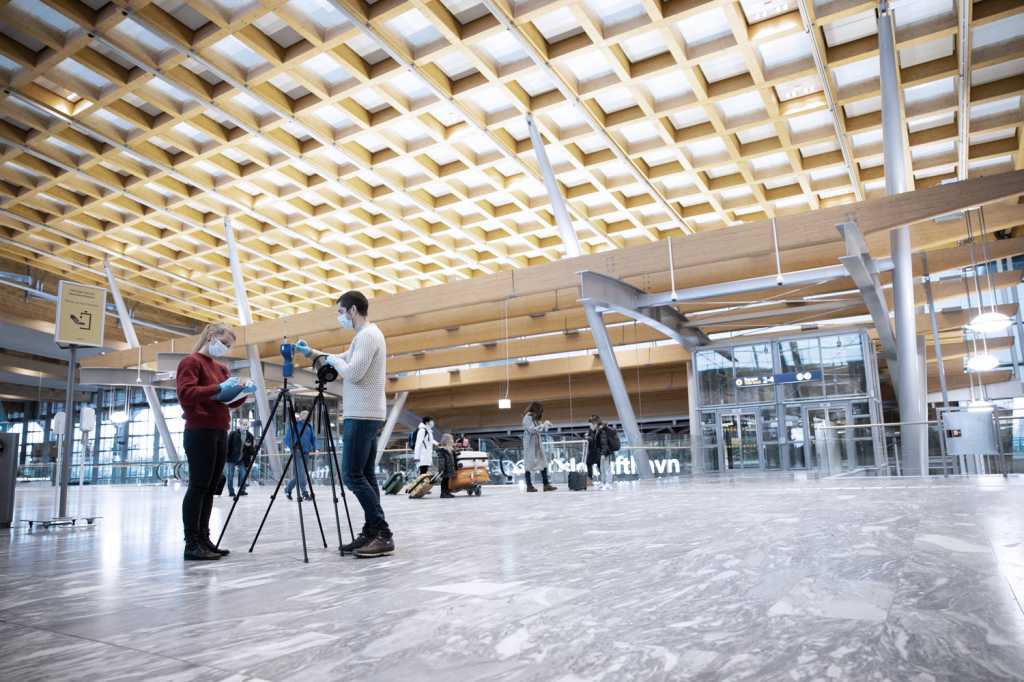The virus hunt
How do viruses spread? Researchers Kari Bøifot and Jostein Gohli collect and measure air particles at Oslo Airport, Gardermoen. This biological material is brought back to the lab for analysis.

Is there corona here? Jostein Gohli is one of FFI’s specialists in environmental monitoring. The senior researcher became the head of the NorCov2 project in 2020, after the outbreak of the COVID-19 pandemic.
In their research on COVID-19, he and his colleagues have collected samples from the Metro station and Metro cars and from Oslo Airport, Gardermoen. The researchers have also collected samples from various types of surfaces. They have also collected many samples from hospitals, including patient rooms. The goal has been to examine environmental exposure for healthcare workers. Results of the project will be published in scientific journals and communicated to participants.

"Our follow-up work will show how effective our monitoring has been in Metro stations and airport environments. We will be obtaining information from hospitals on the amount of virus particles in the air, as a function of the distance to the patient. We will also be looking at certain treatment methods at hospitals and how these affect the amount of viral particles in the air", says Gohli.
Researchers use a particle counter that measures aerosol concentration, or the number of particles of different sizes in the air. They also use an air sampler. Air particles are collected and brought back to the laboratory for study.
At the out-patient test clinic for COVID-19 at Ullevål Hospital, air samples are collected in distances of one meter, two meters and aerosol distance from patients diagnosed with COVID-19. Aerosol distance is so far away from the patient that droplet transmission is not possible. The study involves potential virus particles that hover in the air over a longer period.
"Aerosol transmission of SARS-CoV-2 is a highly debated topic that we wish to highlight. The work in the outpatient test clinic can provide important answers in this debate", says the FFI researcher.
This research will also be useful in a potential war situation, where a virus or biological weapons may conceivably be disseminated during the conflict or as an act of terrorism.
Gohli concludes:
"It is important for us to harness this opportunity. Not only to contribute to the knowledge base around SARS-CoV-2 but also to understand the limitations and benefits of technologies used for monitoring biological threats in general".

